Pit fire, Bonfire, and other primitive firing techniques
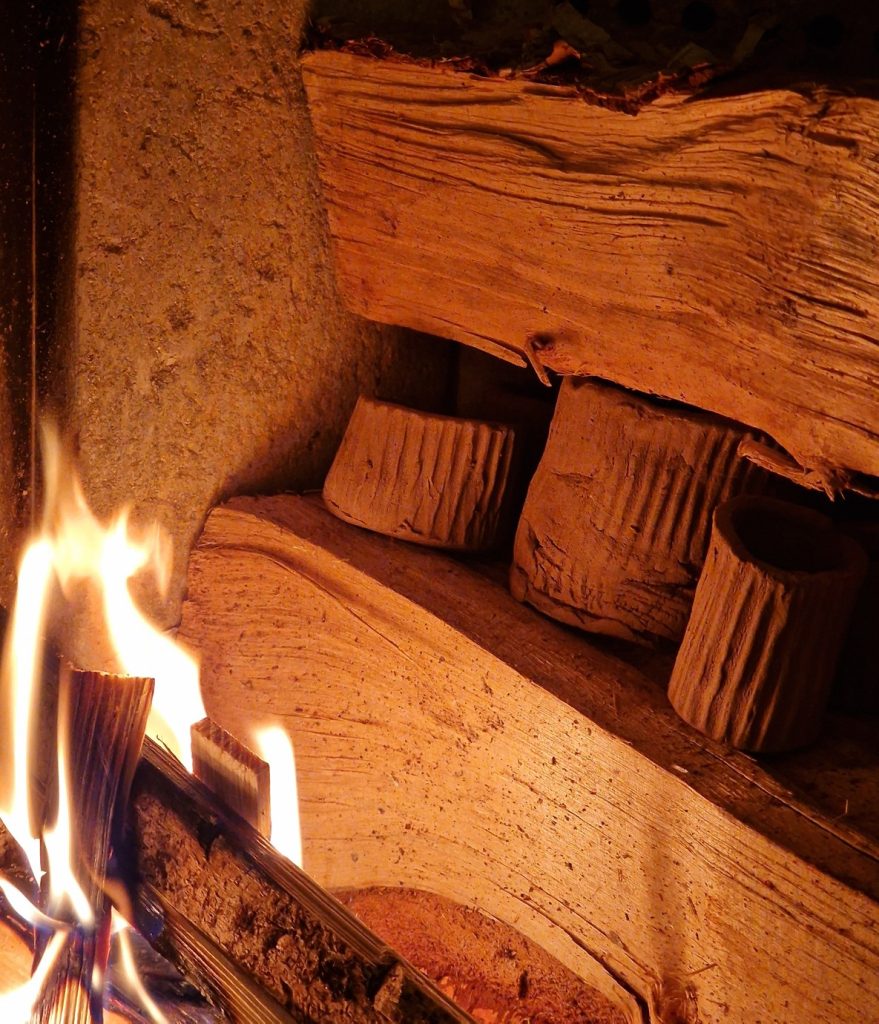
Fire terracotta in a house wood stove.
https://www.woodfireceramic.com/fire-ceramic-in-a-wood-stove/
Make Strong Pottery For Primitive Firing:
How to fire clay at home? How to pit fire pottery without a kiln?
I describe several firing techniques and kilns on this website, I drop links to some of my favorites below.
But this page is about making pottery so it survives primitive firing! This article is about increasing the success rate of firing clay in a primitive kiln, in other words:
How can you build pottery that survives ruff, primitive wood firing?
Fire clay to ceramics is a fragile process, and modern kilns are designed to ease out the pain and reduce stress in the firing. Primitive firing and home firing on the other hand, is a more brutal treatment. And your skills and know-how is often your only tool to ease out the pain and avoid failures in the firing.
Make Strong Pottery For Primitive Firing:
How to reduce failures and cracks under firing:
- Build smart with clay:
- Bigger objects tend to crack more often than small objects
- Thick goods need a longer time to dry and slower heating to avoid stress
- Thin goods can handle uneven heating and temperature chock quite good
- But not too thin either
- Uneven goods-thickness is a major stress factor
- Thin objects with sharp angles asking for trouble
- The denser the clay, the smaller the particles, the more fragile the clay under firing
- Adding chamotte or sand to the clay reduces shrinkage and makes the clay stronger
- Paperclay and other additives that burn away, reduce the weight, and distribute heat better
- Only fire bone-dry clay
- Pre-heat pottery before the main fire when possible
So thick-walled objects with sharp angles and uneven goods-thickness are a challenge, if this describes your design, you will need stronger clay and higher control over the temperature changes to avoid failure. Small-sized objects with rounded corners and 3-4 mm thickness on the other hand, will survive almost everything and hardly need any precaution at all.
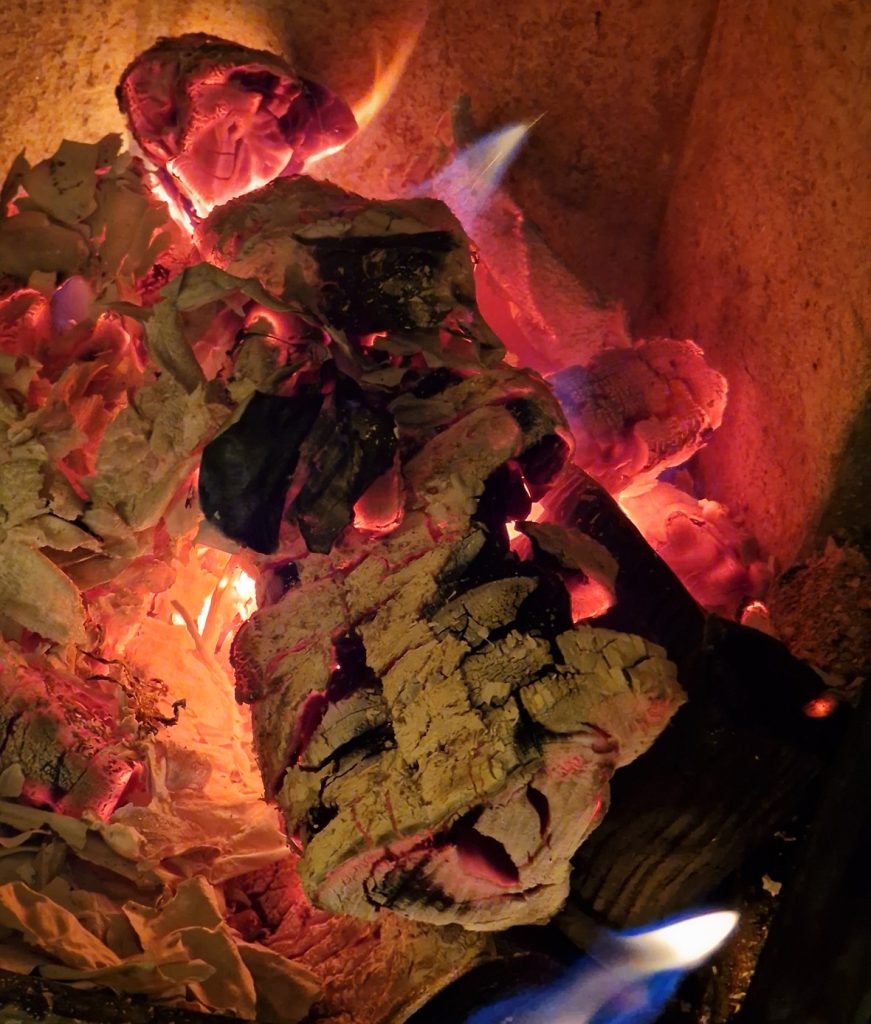
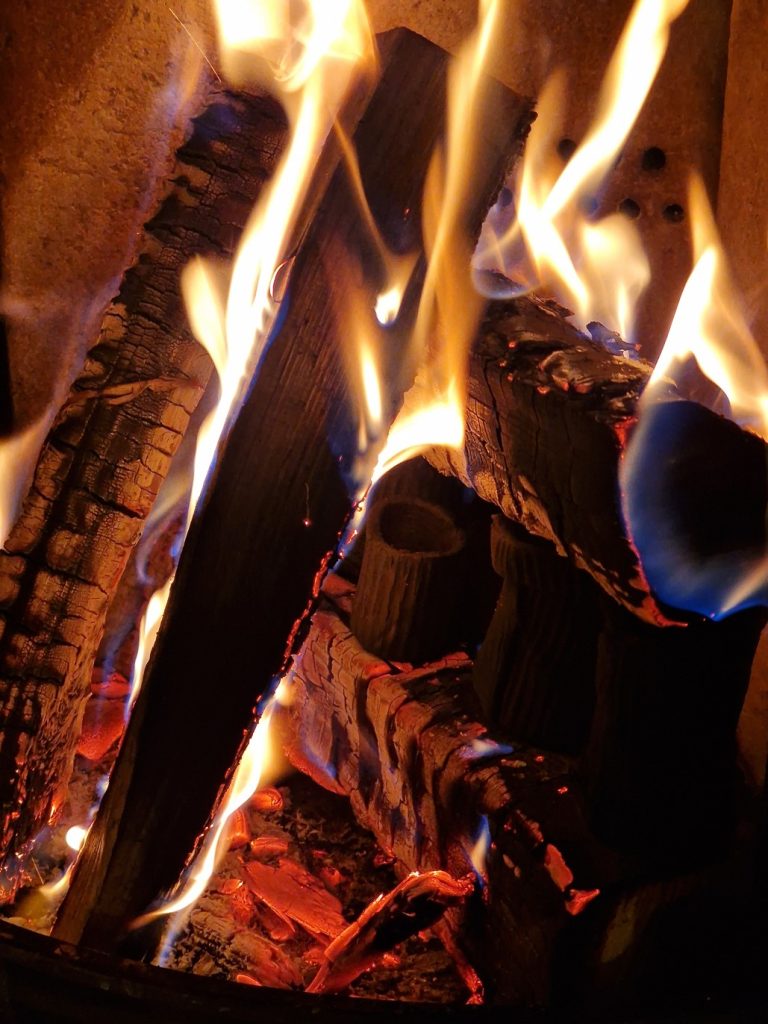

These terracotta objects in the pictures was all about make strong pottery for primitive firing – without any use of chamotte or additives: With their small size and a wall-thickness of 3-4 mm makes trapped moisture vaporizes without stressing the clay.
Clay:
In my experience, you can use almost any clay body for primitive firing, but you can’t make any kind of shape with any type of clay. A ruff raku clay will survive almost anything porcelain won’t. That again doesn’t mean that porcelain is always a bad choice, and you don’t need to marry a raku clay just to be on the safe side. Though primitive firing techniques often require a strong clay body, the success rate depends on many factors, and the type of clay is just one.
Though the fuel can vary; primitive firing always means fired with flames. Primitive firing means firing without a kiln, or a primitive and simple kiln construction. Some of these techniques go back ten thousands of years. Fire clay to ceramics in a bonfire, is believed to mark the origins of pottery, and likely one of humanity's most ancient crafts.
There seems to be a “perfect thickness” for clay objects; less than 2 mm thick walls are fragile, while thicker than 5-6 mm walls need a longer time to preheat to avoid cracks. Leaving us with an ideal thickness between 2 – 5 mm. Cofee-cup-sized objects 2-5 mm thick just never break for me in primitive firing, but they have to be bone-dry before firing.
Earthenware pottery and primitive firing: Pit fire, Bonfire, Sawdust firing, Dung firing, Smoke firing, Rock kiln firing, Paper kilns, Tin Can kilns, and Wood stove firing. There is a wide variety of simple low-tec firing methods to try out. All possible to build in a day, often with things you already own, maybe just found, or will get for free, or in the worst case need to buy (for a microscopic prize). That’s the charm of primitive firing.
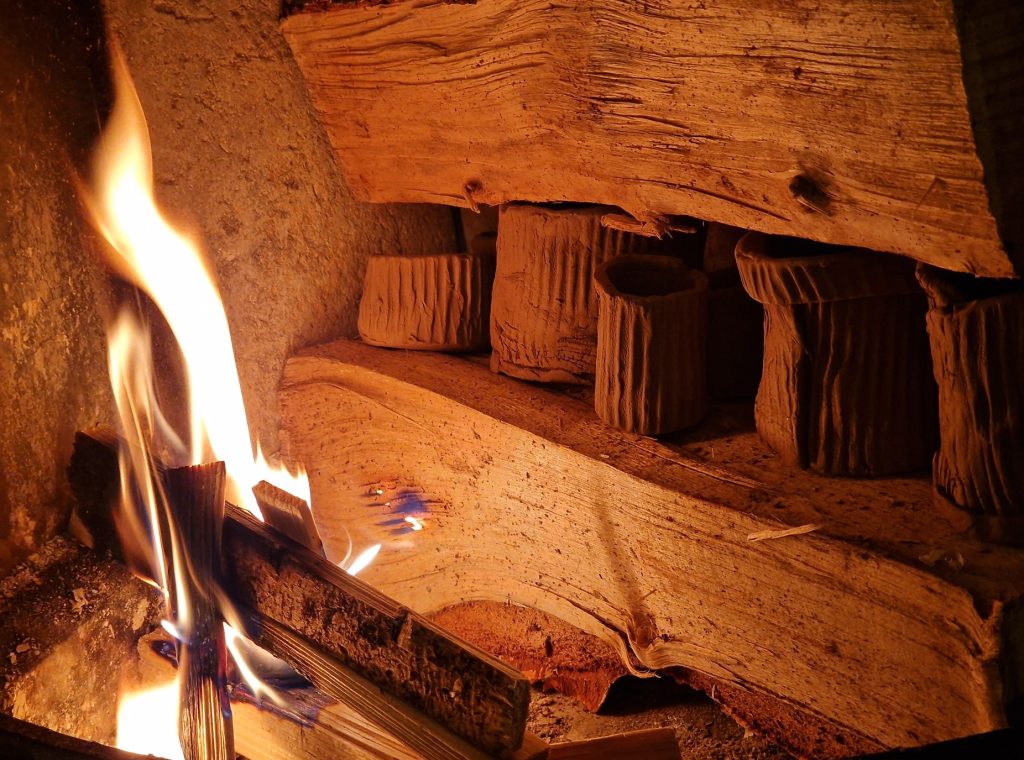
Slowly heating up the pottery with some small firewood, I always pre-heat the pottery for an hour before I ignite the big logs.
Personally I like to work with terracotta out of the bag (we don’t have terracotta as a natural resource in Norway). I only add grog when making big pottery, and when firing ceramics in the most uncontrollable kilns (like the Tin Can kiln).
Remember to fire any kiln right:
https://www.woodfireceramic.com/burn-ceramic-consistently-in-a-wood-kiln/
Build a simple brick kiln for pottery:
https://www.woodfireceramic.com/how-to-build-a-wood-kiln-for-ceramics/
Make the simple sawdust kiln:
https://www.woodfireceramic.com/the-sawdust-kiln/
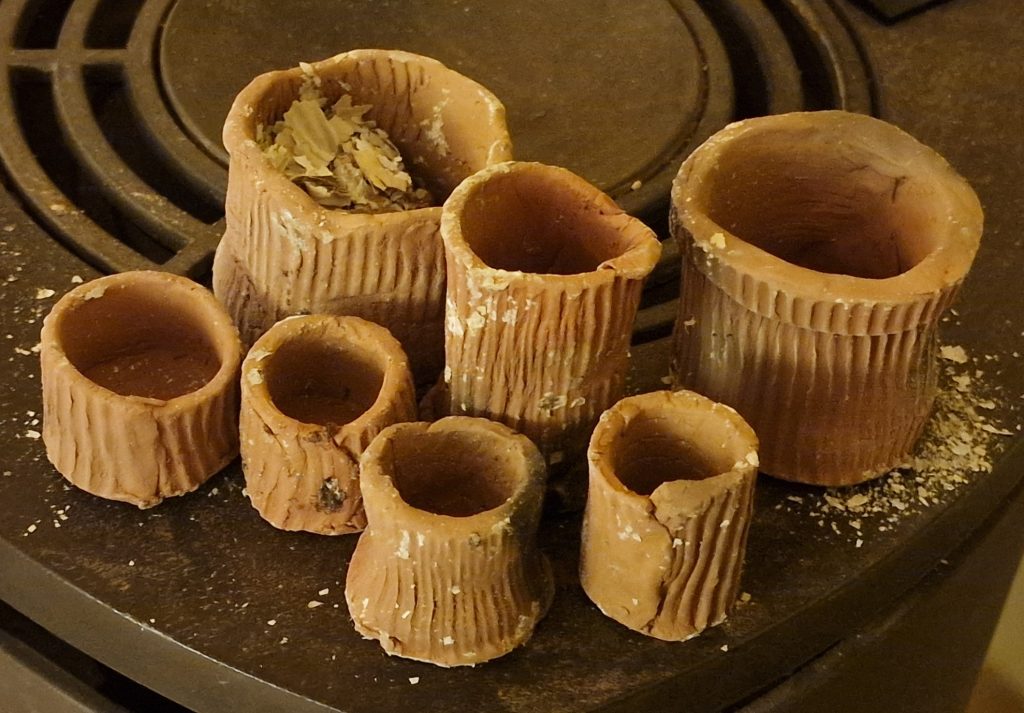
Terracotta after its burned, I would guess it reached between 6-700 degree Celsius, next up is glazing.
Pit fire clay for pit fire kilns:
Primitive firing techniques and earthenware pottery more often than not means both direct flames and rapid, uneven heating. Make strong pottery for primitive firing, is all about balancing the choice of kiln against the clay-type, your desired form, and your building style. Your success rate will surely depend on these choices.
Low fire clay: Primitive firing doesn’t need chamotte, though it certainly makes the clay more robust in most cases. If warping, cracking, and exploding still is a problem, this source can add additional information:
https://thepotterywheel.com/why-pottery-clay-cracks/
Other resources for make strong pottery for primitive firing:
https://ancientpottery.how/primitive-pottery-complete-guide
https://hackoutdoors.com/primitive-clay-how-to-make-clay-from-mud
https://practicalselfreliance.com/making-clay/